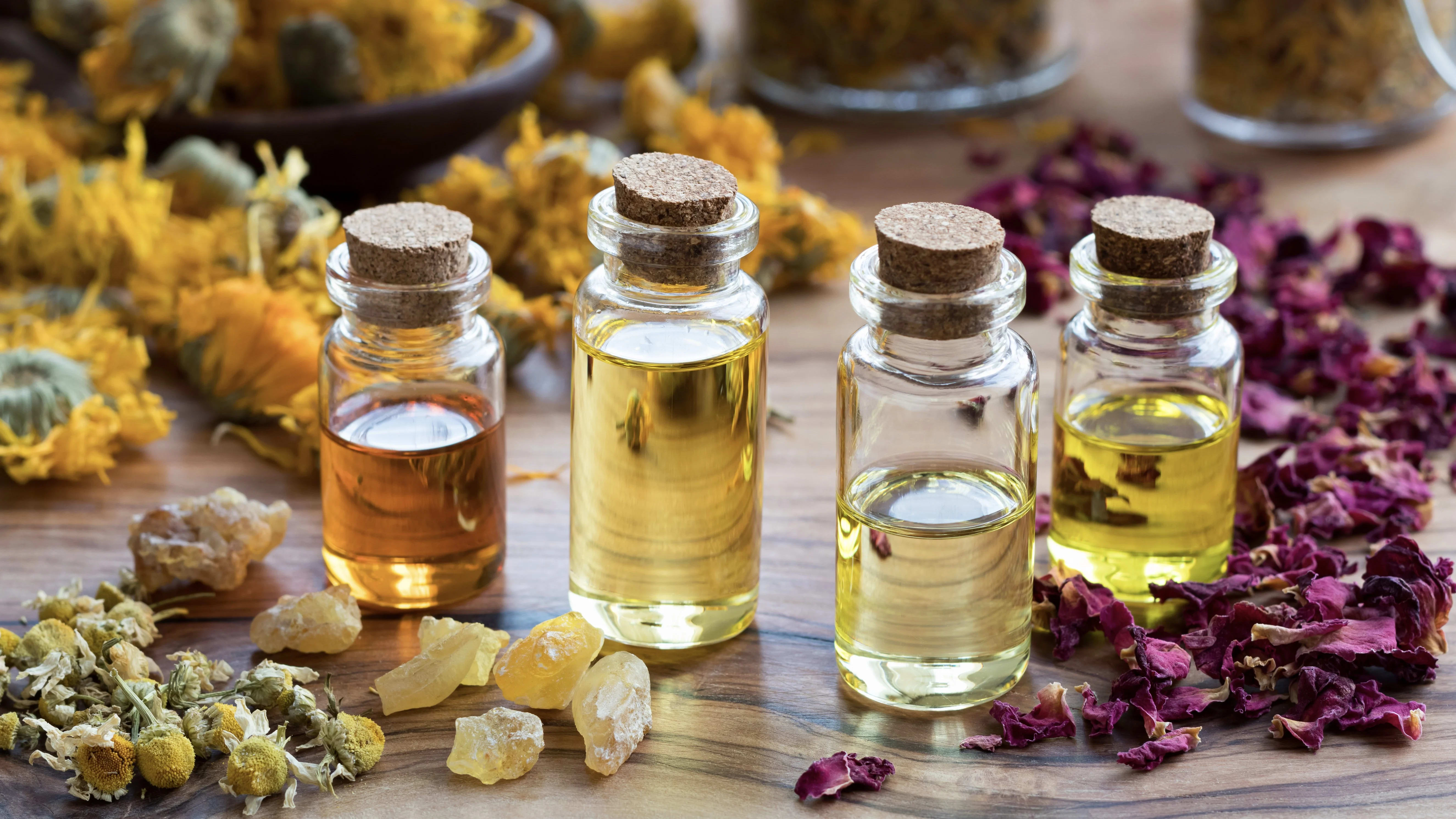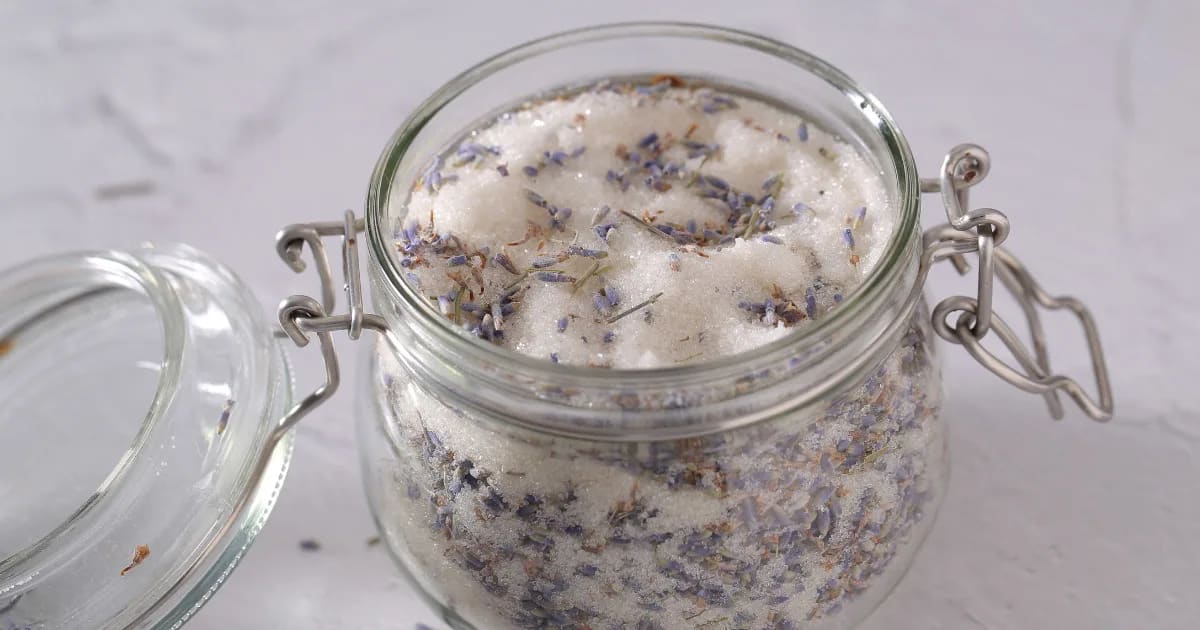Seasonal Allergies & Allergy Symptoms: Natural Aromatherapy Solutions for Sinus Relief and Respiratory Support

Breathe Easy, Naturally
Living in the Montana mountains, I’m surrounded by the beautiful majesty of the conifer forest. While the trees are evergreen year round, there’s no mistaking that they come alive in the spring—when the pollen starts flying. By late spring and early summer, everything is coated in a fine dusting of gold. I struggle with seasonal allergies, but I love being outdoors. Staying inside with the windows closed just isn’t an option for me.
Over the years, I’ve moved away from OTC allergy meds. As an RN, I recognize that they help many people with seasonal allergies—also known as pollen allergies, hay fever, or allergic rhinitis. But for me, medications left my nose feeling dry and irritated and didn’t actually stop my symptoms.
I’ve found a more natural, layered approach to seasonal allergy symptoms works best for me.
In this post, I’m sharing my favorite aromatherapy recipes for allergy relief—including which oils to use and how to use them.
You’ll learn:
What seasonal allergies are
Why pollen seasons are getting longer
Why allergies cause certain symptoms
How you can ease those symptoms naturally
The aromatherapy solutions we’ll discuss are all about calming inflammation, reducing histamine reactions, soothing an overactive immune system, and reducing seasonal allergies—without relying on harsh medications or synthetic ingredients.
Let’s take a deep breath (through your nose, hopefully!) and discover how to find ease, clarity, and comfort—naturally.
Climate Change and Allergies
Seasonal allergies—also known as allergic rhinitis or hay fever—are incredibly common. They affect both children and adults the world over. And though we call them “seasonal,” they can be more like a year-round trial for many of us. Whether it’s spring allergies from budding trees, summer allergies caused by grass pollen, fall allergies brought on by ragweed, or even winter allergies due to dust mites and mold, “allergy season” can feel never-ending.
If that’s the case for you, it’s not just your imagination. According to the Asthma and Allergy Foundation of America, a longer pollen season and rising pollen levels are making symptoms worse across the country. If your city has earned the title of "allergy capital" due to its sky-high pollen count (AAFA 2025), you may have especially severe allergies. Climate change could be behind the longer pollen season (Zhang & Steiner 2022). (I can't help but think of the link between climate change and hay fever symptoms as the Earth communicating to us. If the Earth suffers, so do we. We really are all interconnected.)
What Are Seasonal Allergies?
What exactly is happening when you’re sneezing and rubbing your itchy watery eyes?
Put simply, seasonal allergies occur when your immune system mistakes a harmless substance—like pollen—for a threat. These substances, allergens, are often tiny and invisible. Your body doesn’t recognize them, so the immune system releases chemicals like histamine to "protect" you. Then you get a whole range of frustrating allergy symptoms:
Sneezing fits
Nasal congestion or a runny nose
Itchy or watery eyes
Postnasal drip
Fatigue or brain fog
While the symptoms may feel like a cold, allergic rhinitis and hay fever are not contagious and don’t involve a virus—just an overzealous immune response.
Here are some of the most common environmental allergens:
Allergenic pollen – A broad term that includes pollen from various plants that are known to trigger allergic reactions. Tree pollen is a major player during spring allergies (especially from birch, oak, cedar, and maple trees). And grass pollen peaks during late spring and early summer.
Mold spores – Thrive in damp, humid environments and can be present year-round—especially after rain.
Dust mites – Tiny creatures that live in household dust and love bedding, carpets, and upholstered furniture. (You can use essential oils to help get rid of dust mites. Here are some tips & recipes.)
It’s also worth noting that a food allergy is a different category altogether. While food allergies and seasonal allergies both involve an immune response, they affect the body in different ways. A food allergy tends to trigger more systemic reactions (like hives or digestive upset), whereas seasonal allergies are mostly respiratory and sinus-related.
Everyone reacts to specific allergens differently. Your allergy triggers will vary depending on the season, your location, and your body’s unique sensitivities. You might be fine around dogs but have a pollen allergy—and sneeze uncontrollably when the birch trees bloom.
How Allergy Symptoms Are Diagnosed and Treated
If you want to learn which allergens are triggering your symptoms, allergy testing can help (like a skin prick or blood test). Understanding your triggers can help you take targeted action. Conventional treatments like nasal sprays, allergy medication, and even allergy shots (allergen immunotherapy) have helped many people manage their symptoms.
But if you prefer natural solutions (like me!), you might find relief in a more holistic approach—like essential oils.
One of the great things about using essential oils for allergies is that you don’t necessarily have to pinpoint every specific allergen or allergy trigger you’re sensitive to. Essential oils, combined with thoughtful lifestyle habits, work broadly to ease congestion, reduce inflammation, and support overall respiratory health—regardless of the allergen causing your discomfort.
Natural Allergy Solutions with Aromatherapy
Let’s talk natural support! The reason essential oils can help ease allergy symptoms is all about science: certain essential oils contain natural compounds that help:
Relieve nasal and sinus congestion
Calm inflammation in the nasal passages
Reduce spasms from coughing or sneezing
Modulate an overactive immune system
Soothe the nervous system to support whole-body resilience
The result is real relief—often with fewer side effects than conventional treatments.
I won’t say that aromatherapy will “cure” a pollen allergy. However, in my work as an RN and aromatherapist, I’ve known people who used to suffer through seasonal allergic rhinitis, but no longer get allergies at all. They attribute their success to essential oils. Personally, I rely on essential oils and herbs to get me through allergy season comfortably, with no unwanted side effects.
Which Essential Oils to Use for Allergy Support
There are a long list of oils that can calm allergy symptoms, and what works for me may not work for you. Just as everyone may have different allergy triggers, we can all respond to different oils. That said, here are some of the most supportive essential oils to consider during allergy season:
Black Spruce (Picea mariana) – Black spruce releases tree pollen that can cause an allergic reaction; however, the pollen doesn’t come through in the essential oil, distilled from the needles, which offers powerful relief! (I sometimes playfully imagine the tree is apologizing for causing allergies!) Black spruce oil can calm spasms (sneezing and coughing) (Sadraei et al. 2001) and support healthy, strong lungs (Chen et al. 2014).
Eucalyptus radiata (Eucalyptus radiata) – A favorite for nasal and sinus congestion! This species of eucalyptus is gentler than Eucalyptus globulus, and ideal for inhalation. It helps open airways and supports clear, easy breathing (Kehrl, Sonnemann, & Dethlefsen 2004). I prefer eucalyptus oil over OTC nasal sprays, especially when used in an inhaler. However, this oil is quite strong, and I recommend it for adults and children 10 years or older. Read more about eucalyptus oil in our post, “The Allergy Whisperer!”
Hemlock (Tsuga canadensis) – A grounding, clarifying oil that supports deep breathing and offers emotional calm during stressful allergy days. Hemlock oil contains components known to calm inflammation in the nasal and sinus passages, support lung health, and break up mucus (Boyd & Sheppard 1970; Chen et al. 2014). Hemlock also makes a great DIY anti-allergy shower gel!
Juniper Berry (Juniperus communis) – Detoxifying and cleansing, juniper berry oil helps clear emotional and physical stagnation while supporting lymphatic drainage. It also eases spasms and inflammation (which feels especially nice as it helps soothe your sinuses) (Salehi et al. 2019).
Sweet Marjoram (Origanum majorana) – One of my favorite antispasmodic essential oils! Known for its calming presence, sweet marjoram can help ease coughing and relax inflamed tissues in the upper respiratory tract. (Kuriyama et al. 2005; Battaglia 2019.)
Thyme ct thymol (Thymus vulgaris ct thymol) – Thymol, the main component in this species of thyme, has been shown to help modulate an overactive immune response, making this oil a beautiful ally in calming allergic reactions (Gholijani & Amirghofran 2016). Thymol is a potent component, so I like to save this oil for short-term use during acute flare-ups, and usually reserve it for adults. (There are many different varieties of thyme oil. Compare 3 popular types here.)
Yuzu (Citrus junos) – Uplifting and bright, this citrus oil can calm inflammation and can boost your mood when allergy discomfort disrupts your sense of well-being. It’s rich in d-limonene, a compound that can help modulate an overactive immune system (Lappas & Lappas 2012; Santana et al. 2020). (Yuzu is popular in Japan around the New Year. Read more about it here!)

How to Use Essential Oils for Allergy Relief + Recipes
Now that we’ve explored which essential oils can help with congestion and seasonal sniffles, let’s talk about how to use them!
While you can absolutely apply essential oils topically to calm allergies, I’m going to focus on blends for inhalation in this post. Most of us experience seasonal allergies as respiratory symptoms, so getting the oils into our respiratory system is a key way to bring about comfort. (That's why so many people turn to an OTC nasal spray for comfort. These recipes are more natural than anything you'll find in a nasal spray, and can be just as effective.)
If you’d like to make topical blends too (like roll-ons), be sure to subscribe to my blog, since I’ll be writing more about this in the coming weeks. You can also download my latest guide here: Natural Aromatherapy Solutions for Sinus Relief and Respiratory Support —it has plenty more recipes and solutions!
Diffusion
Diffusing essential oils into the air is a great way to cleanse your space while easing respiratory tension! Every breath you take helps calm inflammation and ease symptoms.
Allergy Clear Diffuser Blend
3 drops Eucalyptus radiata Oil (Eucalyptus radiata)
3 drops Sweet Marjoram Oil (Origanum majorana)
2 drops Black Spruce Oil (Picea mariana)
1 drop Juniper Berry Oil (Juniperus communis)
Pour water into your diffuser to the fill line, and then add your essential oils. Run your diffuser for 30–60 minutes at a time.
This post on our blog offers a diffuser blend for cold & flu relief, but it would also work for allergy care.
Steam Inhalation
Steam inhalation can be a game-changer for fast, targeted sinus support! I steam almost every day during allergy season (and sometimes several times a day). All you have to do is fill a bowl with steamy water and add one (just ONE!) drop of essential oil. Then lean over the bowl, drape a towel over your head, close your eyes, and inhale the steam.
I prefer steaming with a strong, penetrating oil like eucalyptus, as I find it clears my sinuses more effectively. However, you can try this with any essential oil that supports the respiratory system.
Steaming is a powerful way to deliver essential oils, so I reserve it for adults. It can be too strong for children under 10.
Sinus Relief Steam
1 drop Eucalyptus radiata Oil (Eucalyptus radiata)
This method delivers moisture and essential oil vapors directly into your nasal passages to help loosen mucus. Just be sure to keep your eyes closed while steaming (so the oil doesn’t irritate them), and keep a box of tissues nearby to blow your nose! (Steaming can sometimes clear your sinuses better than a nasal spray!) Read more about steaming with eucalyptus here.
Personal Allergy Inhalers
An aromatherapy inhaler delivers essential oil molecules right to the “scene of the action”—to your nose, sinuses, and even into your lungs when you breathe them in deeply. (I like to think of them as the natural alternative to nasal sprays.) Inhalers are especially convenient because you can take them on the go. Whenever your allergies start acting up, take a few moments to breathe with your inhaler. You might be surprised at how effective it is!
The oils in this blend are very strong. I don’t typically use them directly on children’s noses, so I’ve included a kid-safe version of this recipe below.
Acute Relief Allergy Inhaler with Hemlock
8 drops Hemlock Oil (Tsuga canadensis)
3 drops Thyme ct thymol Oil (Thymus vulgaris ct thymol)
2 drops Black Spruce Oil (Picea mariana)
An aromatherapy inhaler is about the shape and size of a lip balm tube. A polyester wick or organic cotton absorbs the essential oils and fits right into a little plastic sleeve. Get more details on how to make an inhaler in this post.
For Kids: Acute Relief Allergy Inhaler with Hemlock
4 drops Hemlock Oil (Tsuga canadensis)
2 drops Yuzu Oil (Citrus junos)
1 drop Black Spruce Oil (Picea mariana)
Safety Tips
If you’re allergic to a specific plant, you may want to avoid essential oils derived from it. There’s no guarantee that you’ll be allergic to the oil, but it’s a good idea to use it cautiously. Waft the oil under your nose, taking small “sips” of breath. Then try a few deeper inhalations. Pay attention to your body’s reactions. Choose a different oil if it makes your chest feel tight or your nose tickle with a coming sneeze.
If you have asthma (including allergy asthma) or another respiratory condition, you should take the same precautions.
Children tend to be more sensitive to essential oils. I like to use very gentle oils and lower drop counts for them. Follow the tips in this post for more information.

More Tips for Allergy Season
Here are a few tips to make daily life a little easier for allergy sufferers!
Itchy Eyes? Try Cornflower Hydrosol
Itchy, watery eyes are a common seasonal allergy symptom. I like to saturate cotton balls with cornflower hydrosol (Centaurea cyanus) until they’re nice and drippy, then lay them over my closed eyes. The cool, floral water feels like instant relief. I sometimes rub gently around the eyelids, too—simple but soothing. (Not familiar with hydrosols? You’re in for a treat! Learn about them and discover a new way to use aromatherapy!Keep Windows Closed During High Pollen Counts
This is especially important in the early morning and late afternoon, when pollen levels tend to be the highest. If you live in an area with high pollen counts (like an allergy capital), try to stay indoors during these hours to limit the amount of pollen inside your home.Use an Air Purifier or Filtered Ventilation System
While opening windows can be refreshing, it may also invite allergens indoors, especially during high-pollen days. A high-quality air purifier or a filtered ventilation system with a HEPA-grade filter can be a better choice. These systems help capture pollen, dust, and other airborne irritants, creating a cleaner, more breathable indoor environment without relying on traditional air conditioning.Monitor the Pollen Forecast
The pollen level fluctuates from day to day. Keeping track of the pollen forecast is a great way to plan around high pollen levels. Many weather apps now feature pollen counts that consider grass and tree pollen. You can also use specialized pollen tracking websites or apps to stay informed. If the forecast looks high, limit outdoor activities and take extra precautions.Switch to Natural, Homemade Cleaning Products
Most conventional cleaning products contain harsh chemicals and synthetic fragrances that can irritate the respiratory system and make allergy symptoms worse. By making your own cleaning products with simple, non-toxic ingredients—like vinegar, baking soda, and essential oils—you can reduce your exposure. Plus, essential oils bring natural antibacterial and antifungal properties to your cleaning routine! Get started making your own cleaning products with this post.
Complimentary Download: Your Natural Allergy Care Toolkit
Ready to take control of your allergies this season? Grab your Allergy Relief Toolkit: DIY Remedies & Breathing Support Checklist today! Inside, you’ll find:
Essential oil blends to relieve nasal congestion and soothe seasonal symptoms
Step-by-step instructions for the safe, effective use of aromatherapy
Breathing support tips and natural remedies for clear, easy breathing
A handy checklist for simple changes in your lifestyle that help calm allergy symptoms.
Download your FREE toolkit now and start feeling better, naturally!
My Takeaway
For me, finding relief from seasonal allergies is not about fighting nature—it’s about learning to live in rhythm with it.
In the winter, I focus on immune support so I’m less reactive come spring. When allergy season inevitably arrives, I turn to the earth’s own remedies: the crisp note of eucalyptus, the gentle touch of cornflower on tired eyes, the grounding taste of nettle tea (one of my favorite go-to’s!). These rituals have become my anchors—reminding me to slow down, breathe deeply, and meet my body with compassion.
Allergy season may still bring its challenges, but it doesn’t own me anymore. I’ve found a gentler way forward, one grounded in trust, self-care, and the healing power of plants.
Wherever you are on your journey, I hope this post inspires you to explore natural support, so you can breathe a little easier, live a little fuller, and reconnect with the beauty of the season in your own skin.
REFERENCES
Asthma and Allergy Foundation of America. (2025, March 18). Pollen seasons are longer and more intense, affecting millions [Press release]. https://aafa.org/pollen-seasons-are-longer-and-more-intense-affecting-millions/
Battaglia, S. (2019) The Complete Guide to Aromatherapy (Third Edition) Vol I: Foundations & Materia Medica. Zillmere, QLD, Australia. Black Pepper Creative Party, Ltd.
Boyd EM, Sheppard P. (1970). Nutmeg oil and camphene as inhaled expectorants. Archives of Otolaryngology (Chicago) 92,4,372-378.
Chen N, Sun G, Yuan X, Hou J, Wu Q, Soromou LW, Feng H. (2014). Inhibition of lung inflammatory responses by bornyl acetate is correlated with regulation of myeloperoxidase activity. Journal of Surgical Research 186, 436-445.
Franchomme, P. and Pénoël, D. (1990) L’aromathérapie Exactement. Limoges: Jallois.
Gholijani, N., & Amirghofran, Z. (2016). Effects of thymol and carvacrol on T-helper cell subset cytokines and their main transcription factors in ovalbumin-immunized mice. Journal of immunotoxicology, 13(5), 729–737. https://doi.org/10.3109/1547691X.2016.1173134
Guimarães, A.G., Quintans, J.S.S. and Quintans-Júnior, L.J. (2013) Monoterpenes with analgesic activity – a systematic review. Phytotherapy Research 27, 1-15.
Kehrl, W., Sonnemann, U., & Dethlefsen, U. (2004). Therapy for Acute Nonpurulent Rhinosinusitis With Cineole: Results of a Double‐Blind, Randomized, Placebo‐Controlled Trial. The Laryngoscope, 114(4), 738-742.
Kim, H.M. and Cho, S.H. (1999) Lavender oil inhibits immediate-type allergic reaction in mice and rats. Journal of Pharmacy and Pharmacology 51, 221-226.
Lappas, C. M., & Lappas, N. T. (2012). D-Limonene modulates T lymphocyte activity and viability. Cellular immunology, 279(1), 30–41. https://doi.org/10.1016/j.cellimm.2012.09.002
Mitoshi, M., Kuriyama, I., Nakayama, H., Miyazato, H., Sugimoto, K., Kobayashi, Y., Jippo, T., Kuramochi, K., Yoshida, H., & Mizushina, Y. (2014). Suppression of allergic and inflammatory responses by essential oils derived from herbal plants and citrus fruits. International journal of molecular medicine, 33(6), 1643–1651. https://doi.org/10.3892/ijmm.2014.1720
Sadraei, H., Asghari, G. R., Hajhashemi, V., Kolagar, A., & Ebrahimi, M. (2001). Spasmolytic activity of essential oil and various extracts of Ferula gummosa Boiss. on ileum contractions. Phytomedicine : international journal of phytotherapy and phytopharmacology, 8(5), 370–376. https://doi.org/10.1078/0944-7113-00052
Salehi, B., Upadhyay, S., Erdogan Orhan, I., Kumar Jugran, A., L D Jayaweera, S., A Dias, D., Sharopov, F., Taheri, Y., Martins, N., Baghalpour, N., Cho, W. C., & Sharifi-Rad, J. (2019). Therapeutic Potential of α- and β-Pinene: A Miracle Gift of Nature. Biomolecules, 9(11), 738. https://doi.org/10.3390/biom9110738
Santana, H. S. R., de Carvalho, F. O., Silva, E. R., Santos, N. G. L., Shanmugam, S., Santos, D. N., Wisniewski, J. O., Junior, J. S. C., Nunes, P. S., Araujo, A. A. S., de Albuquerque Junior, R. L. C., & Dos Santos, M. R. V. (2020). Anti-Inflammatory Activity of Limonene in the Prevention and Control of Injuries in the Respiratory System: A Systematic Review. Current pharmaceutical design, 26(18), 2182–2191. https://doi.org/10.2174/1381612826666200320130443
Zhang, Y., & Steiner, A. L. (2022). Projected climate-driven changes in pollen emission season length and magnitude over the continental United States. Nature Communications, 13, Article 1234.https://doi.org/10.1038/s41467-022-28764-0






